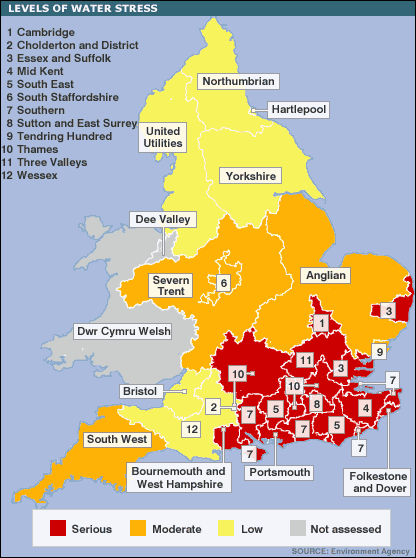Where are the areas of water deficit and surplus in the UK?
Availability of water across the UK is uneven.
Population distribution in the UK is uneven. The most densely populated areas are often located in the driest areas. As you can see from the map below, population density in the UK is highest in the southeast. One-third of the population of the UK lives in this area.
However, the south-east is also one of the driest areas in the UK. The map below shows average yearly rainfall rates in the UK between 1981 to 2010.
From the rainfall map, it is clear that some areas experience high levels of rainfall but have a low population density. An example of this is North Wales. This suggests the area has a water surplus. However, the southeast of England has low levels of rainfall. However, population density is high. The area experiences a water deficit. This means it does not have enough water to meet the population’s needs. Areas which suffer from significant water deficits are said to be undergoing severe water stress when the water available is not sufficient to meet the needs of the population or is of poor quality. The map below shows areas affected by water stress.

A map to show water stress in England. Source BBC News: http://news.bbc.co.uk/1/hi/england/6314091.stm
UK rainfall is very unreliable. In some years, rainfall is well below average, for example, in 2006, when hosepipe bans were put in place. However, in other years rainfall has been well above average.
The north and west of the UK are wet because they are primarily upland areas. This means air moving from the west to the east has to rise over high land. As the air rises it cools, condenses and forms clouds. This then results in rain. This is known as relief rainfall.
Water transfer in the UK
Use the images below to explore related GeoTopics.